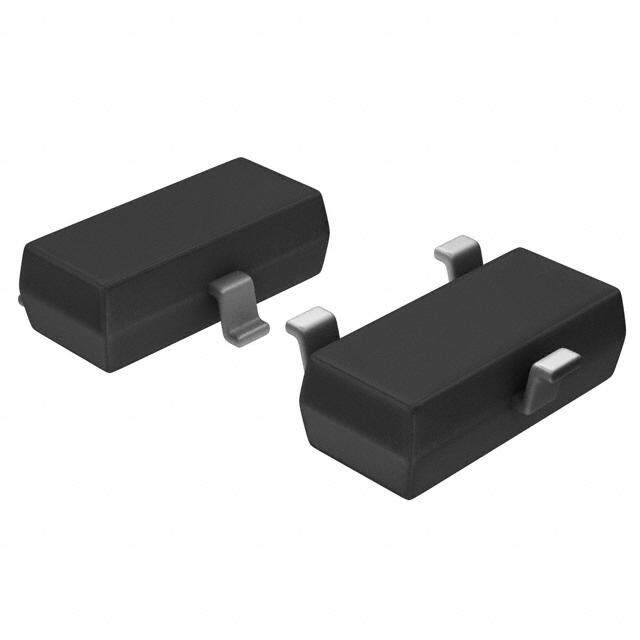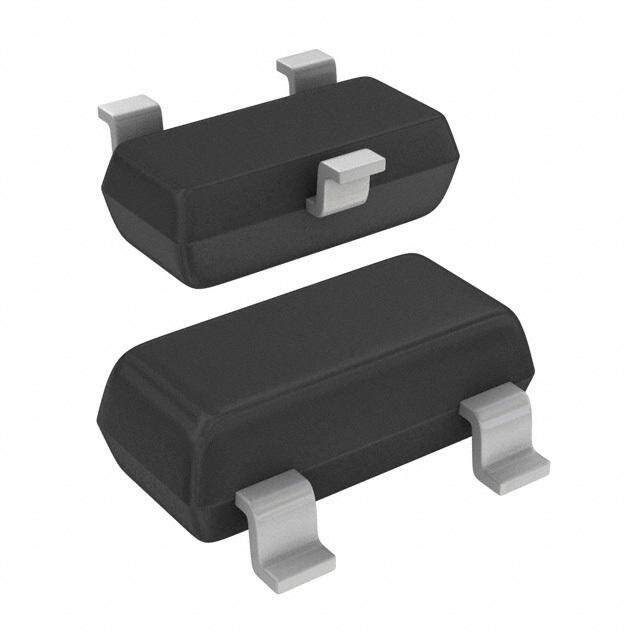ICGOO在线商城 > 集成电路(IC) > PMIC - 电压基准 > LT1461CIS8-2.5#PBF
- 型号: LT1461CIS8-2.5#PBF
- 制造商: LINEAR TECHNOLOGY
- 库位|库存: xxxx|xxxx
- 要求:
| 数量阶梯 | 香港交货 | 国内含税 |
| +xxxx | $xxxx | ¥xxxx |
查看当月历史价格
查看今年历史价格
LT1461CIS8-2.5#PBF产品简介:
ICGOO电子元器件商城为您提供LT1461CIS8-2.5#PBF由LINEAR TECHNOLOGY设计生产,在icgoo商城现货销售,并且可以通过原厂、代理商等渠道进行代购。 LT1461CIS8-2.5#PBF价格参考。LINEAR TECHNOLOGYLT1461CIS8-2.5#PBF封装/规格:PMIC - 电压基准, 系列 电压基准 IC ±0.08% 100mA 8-SOIC。您可以下载LT1461CIS8-2.5#PBF参考资料、Datasheet数据手册功能说明书,资料中有LT1461CIS8-2.5#PBF 详细功能的应用电路图电压和使用方法及教程。
LT1461CIS8-2.5#PBF 是由 Linear Technology(现为 Analog Devices)生产的一款低 dropout (LDO) 稳压器,属于 PMIC - 电压基准类别。以下是其主要应用场景: 1. 精密电源系统 - LT1461 提供高精度的输出电压(2.5V ±0.5%),适用于需要稳定和精确电压的设备,例如测试测量仪器、数据采集系统和传感器接口。 - 其低 dropout 特性(典型值为375mV@150mA)使其适合为低压差场景供电。 2. 便携式电子设备 - 该器件的低静态电流(典型值为40µA)和小封装尺寸(SOT-23 封装)使其成为电池供电设备的理想选择,如手持式医疗设备、便携式音频设备和无线通信模块。 3. 嵌入式系统 - 在微控制器或 DSP 系统中,LT1461 可用作核心电压或外围电路的稳压电源,确保系统的稳定运行。 - 其快速瞬态响应能力能够适应负载变化频繁的应用环境。 4. 模拟电路供电 - 对于需要低噪声电源的模拟电路(如运算放大器、ADC/DAC 和 RF 模块),LT1461 的低输出噪声特性(典型值为20µVRMS)提供了理想的供电解决方案。 5. 工业自动化与控制 - 在工业环境中,LT1461 可用于为 PLC、DC-DC 转换器或其他关键组件提供稳定的参考电压。 - 宽输入电压范围(1.8V 至 20V)增强了其在不同电源条件下的适用性。 6. 汽车电子 - 虽然 LT1461 并非专门针对汽车级设计,但在某些非严苛条件下,它仍可用于汽车信息娱乐系统或辅助电子模块中,作为次级稳压器。 总之,LT1461CIS8-2.5#PBF 凭借其高精度、低 dropout 和低噪声特性,在需要稳定电压基准的各种应用场合中表现出色。
| 参数 | 数值 |
| 产品目录 | 集成电路 (IC) |
| 描述 | IC VREF SERIES PREC 2.5V 8-SOIC |
| 产品分类 | |
| 品牌 | Linear Technology |
| 数据手册 | http://www.linear.com/docs/1342 |
| 产品图片 |
|
| 产品型号 | LT1461CIS8-2.5#PBF |
| rohs | 无铅 / 符合限制有害物质指令(RoHS)规范要求 |
| 产品系列 | - |
| 产品培训模块 | http://www.digikey.cn/PTM/IndividualPTM.page?site=cn&lang=zhs&ptm=19477 |
| 供应商器件封装 | 8-SOIC |
| 其它名称 | LT1461CIS825PBF |
| 包装 | 管件 |
| 参考类型 | 串联,精度 |
| 安装类型 | 表面贴装 |
| 容差 | ±0.08% |
| 封装/外壳 | 8-SOIC(0.154",3.90mm 宽) |
| 工作温度 | -40°C ~ 85°C |
| 标准包装 | 100 |
| 温度系数 | 12ppm/°C |
| 电压-输入 | 3 V ~ 20 V |
| 电压-输出 | 2.5V |
| 电流-输出 | 100mA |
| 电流-阴极 | - |
| 电流-静态 | 50µA |
| 通道数 | 1 |




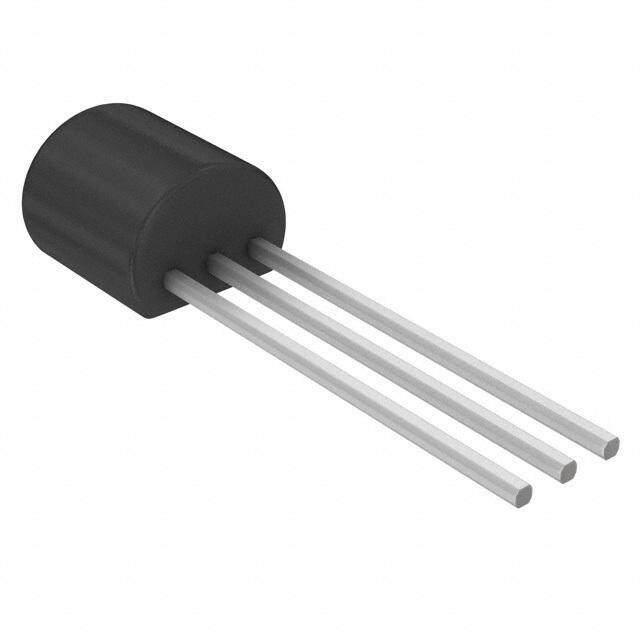




- 商务部:美国ITC正式对集成电路等产品启动337调查
- 曝三星4nm工艺存在良率问题 高通将骁龙8 Gen1或转产台积电
- 太阳诱电将投资9.5亿元在常州建新厂生产MLCC 预计2023年完工
- 英特尔发布欧洲新工厂建设计划 深化IDM 2.0 战略
- 台积电先进制程称霸业界 有大客户加持明年业绩稳了
- 达到5530亿美元!SIA预计今年全球半导体销售额将创下新高
- 英特尔拟将自动驾驶子公司Mobileye上市 估值或超500亿美元
- 三星加码芯片和SET,合并消费电子和移动部门,撤换高东真等 CEO
- 三星电子宣布重大人事变动 还合并消费电子和移动部门
- 海关总署:前11个月进口集成电路产品价值2.52万亿元 增长14.8%
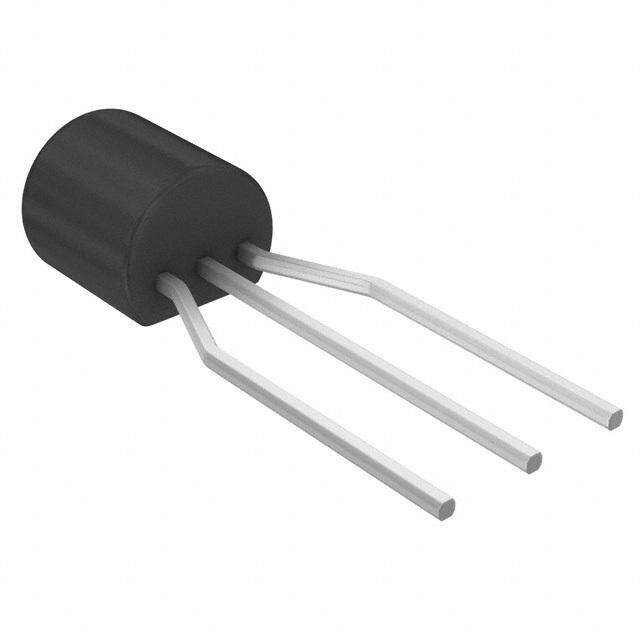
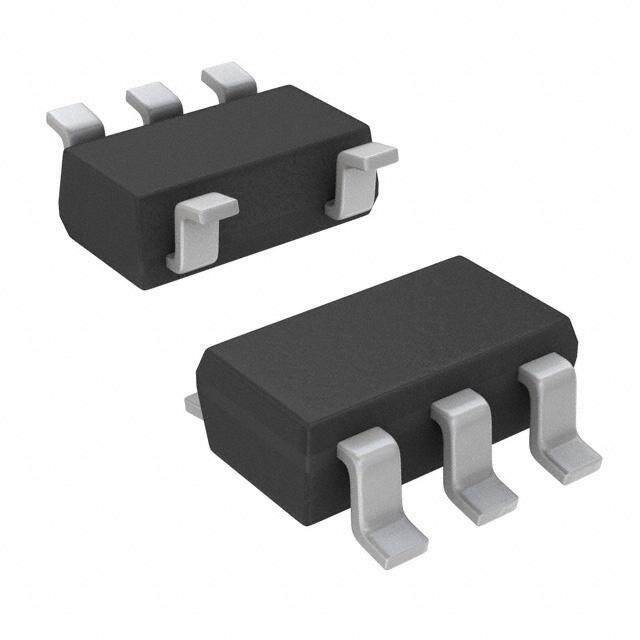
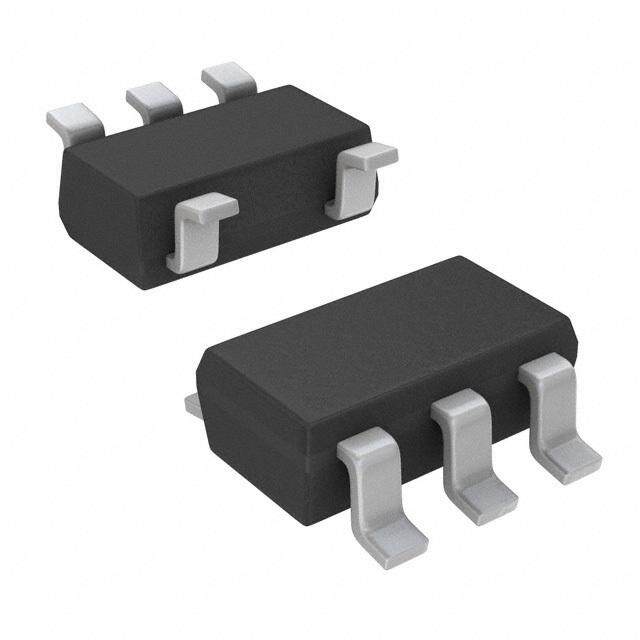

PDF Datasheet 数据手册内容提取
LT1461 Micropower Precision Low Dropout Series Voltage Reference Family FeaTures DescripTion n Trimmed to High Accuracy: 0.04% Max The LT®1461 is a family of low dropout micropower band- n Low Drift: 3ppm/°C Max gap references that combine very high accuracy and low n Low Supply Current: 50µA Max drift with low supply current and high output drive. These n High Output Current: 50mA Min series references use advanced curvature compensation n Low Dropout Voltage: 300mV Max techniques to obtain low temperature coefficient and n Excellent Thermal Regulation trimmed precision thin-film resistors to achieve high n Power Shutdown output accuracy. The LT1461 family draws only 35µA n Thermal Limiting of supply current, making them ideal for low power and n All Parts Guaranteed Functional from –40°C to 125°C portable applications, however their high 50mA output n Voltage Options: 2.5V, 3V, 3.3V, 4.096V and 5V drive makes them suitable for higher power requirements, such as precision regulators. applicaTions In low power applications, a dropout voltage of less than 300mV ensures maximum battery life while maintaining n A/D and D/A Converters full reference performance. Line regulation is nearly im- n Precision Regulators measurable, while the exceedingly good load and ther- n Handheld Instruments mal regulation will not add significantly to system error n Power Supplies budgets. The shutdown feature can be used to switch full load currents and can be used for system power down. Thermal shutdown protects the part from overload condi- tions. The LT1461 is available in 2.5V, 3V, 3.3V 4.096V and 5V options. L, LT, LTC, LTM, Linear Technology and the Linear logo are registered trademarks of Linear Technology Corporation. All other trademarks are the property of their respective owners. Typical applicaTion Basic Connection LT1461-2.5 Load Regulation, P = 200mW DISS (VOUT + 0.3V) ≤ VIN ≤ 20V LT1461 VOUT 0mA CIN CL 1µF 2µF VOUT 1461 TA01 20mA VOUT LOAD REG 1mV/DIV 1461 TA02 10ms/DIV 1461fb 1 For more information www.linear.com/LT1461
LT1461 absoluTe MaxiMuM raTings pin conFiguraTion (Note 1) Input Voltage ............................................................20V TOP VIEW Output Short-Circuit Duration ..........................Indefinite DNC* 1 8 DNC* Operating Temperature Range VIN 2 7 DNC* (Note 2) .............................................–40°C to 125°C SHDN 3 6 VOUT Storage Temperature Range (Note 3) .....–65°C to 150°C GND 4 5 DNC* Specified Temperature Range S8 PACKAGE Commercial .............................................0°C to 70°C 8-LEAD PLASTIC SO Industrial .............................................–40°C to 85°C *DNC: DO NOT CONNECT TJMAX = 150°C, θJA = 190°C/W High ...................................................–40°C to 125°C (Note 3) Lead Temperature (Soldering, 10 sec) ...................300°C orDer inForMaTion LEAD FREE FINISH TAPE AND REEL PART MARKING PACKAGE DESCRIPTION SPECIFIED TEMPERATURE RANGE LT1461ACS8-2.5#PBF LT1461ACS8-2.5#TRPBF 461A25 8-LEAD PLASTIC SO 0°C to 70°C LT1461ACS8-3#PBF LT1461ACS8-3#TRPBF 1461A3 8-LEAD PLASTIC SO 0°C to 70°C LT1461ACS8-3.3#PBF LT1461ACS8-3.3#TRPBF 461A33 8-LEAD PLASTIC SO 0°C to 70°C LT1461ACS8-4#PBF LT1461ACS8-4#TRPBF 1461A4 8-LEAD PLASTIC SO 0°C to 70°C LT1461ACS8-5#PBF LT1461ACS8-5#TRPBF 1461A5 8-LEAD PLASTIC SO 0°C to 70°C LT1461BCS8-2.5#PBF LT1461BCS8-2.5#TRPBF 461B25 8-LEAD PLASTIC SO 0°C to 70°C LT1461BCS8-3#PBF LT1461BCS8-3#TRPBF 1461B3 8-LEAD PLASTIC SO 0°C to 70°C LT1461BCS8-3.3#PBF LT1461BCS8-3.3#TRPBF 461B33 8-LEAD PLASTIC SO 0°C to 70°C LT1461BCS8-4#PBF LT1461BCS8-4#TRPBF 1461B4 8-LEAD PLASTIC SO 0°C to 70°C LT1461BCS8-5#PBF LT1461BCS8-5#TRPBF 1461B5 8-LEAD PLASTIC SO 0°C to 70°C LT1461CCS8-2.5#PBF LT1461CCS8-2.5#TRPBF 461C25 8-LEAD PLASTIC SO 0°C to 70°C LT1461CCS8-3#PBF LT1461CCS8-3#TRPBF 1461C3 8-LEAD PLASTIC SO 0°C to 70°C LT1461CCS8-3.3#PBF LT1461CCS8-3.3#TRPBF 461C33 8-LEAD PLASTIC SO 0°C to 70°C LT1461CCS8-4#PBF LT1461CCS8-4#TRPBF 1461C4 8-LEAD PLASTIC SO 0°C to 70°C LT1461CCS8-5#PBF LT1461CCS8-5#TRPBF 1461C5 8-LEAD PLASTIC SO 0°C to 70°C LT1461AIS8-2.5#PBF LT1461AIS8-2.5#TRPBF 61AI25 8-LEAD PLASTIC SO –40°C to 85°C LT1461AIS8-3#PBF LT1461AIS8-3#TRPBF 461AI3 8-LEAD PLASTIC SO –40°C to 85°C LT1461AIS8-3.3#PBF LT1461AIS8-3.3#TRPBF 61AI33 8-LEAD PLASTIC SO –40°C to 85°C LT1461AIS8-4#PBF LT1461AIS8-4#TRPBF 461AI4 8-LEAD PLASTIC SO –40°C to 85°C LT1461AIS8-5#PBF LT1461AIS8-5#TRPBF 461AI5 8-LEAD PLASTIC SO –40°C to 85°C LT1461BIS8-2.5#PBF LT1461BIS8-2.5#TRPBF 61BI25 8-LEAD PLASTIC SO –40°C to 85°C LT1461BIS8-3#PBF LT1461BIS8-3#TRPBF 461BI3 8-LEAD PLASTIC SO –40°C to 85°C LT1461BIS8-3.3#PBF LT1461BIS8-3.3#TRPBF 61BI33 8-LEAD PLASTIC SO –40°C to 85°C LT1461BIS8-4#PBF LT1461BIS8-4#TRPBF 461BI4 8-LEAD PLASTIC SO –40°C to 85°C LT1461BIS8-5#PBF LT1461BIS8-5#TRPBF 461BI5 8-LEAD PLASTIC SO –40°C to 85°C LT1461CIS8-2.5#PBF LT1461CIS8-2.5#TRPBF 61CI25 8-LEAD PLASTIC SO –40°C to 85°C LT1461CIS8-3#PBF LT1461CIS8-3#TRPBF 461CI3 8-LEAD PLASTIC SO –40°C to 85°C LT1461CIS8-3.3#PBF LT1461CIS8-3.3#TRPBF 61CI33 8-LEAD PLASTIC SO –40°C to 85°C 1461fb 2 For more information www.linear.com/LT1461
LT1461 orDer inForMaTion LEAD FREE FINISH TAPE AND REEL PART MARKING PACKAGE DESCRIPTION SPECIFIED TEMPERATURE RANGE LT1461CIS8-4#PBF LT1461CIS8-4#TRPBF 461CI4 8-LEAD PLASTIC SO –40°C to 85°C LT1461CIS8-5#PBF LT1461CIS8-5#TRPBF 461CI5 8-LEAD PLASTIC SO –40°C to 85°C LT1461DHS8-2.5#PBF LT1461DHS8-2.5#TRPBF 61DH25 8-LEAD PLASTIC SO –40°C to 125°C LT1461DHS8-3#PBF LT1461DHS8-3#TRPBF 461DH3 8-LEAD PLASTIC SO –40°C to 125°C LT1461DHS8-3.3#PBF LT1461DHS8-3.3#TRPBF 61DH33 8-LEAD PLASTIC SO –40°C to 125°C LT1461DHS8-4#PBF LT1461DHS8-4#TRPBF 461DH4 8-LEAD PLASTIC SO –40°C to 125°C LT1461DHS8-5#PBF LT1461DHS8-5#TRPBF 461DH5 8-LEAD PLASTIC SO –40°C to 125°C Consult LTC Marketing for parts specified with wider operating temperature ranges. Consult LTC Marketing for information on nonstandard lead based finish parts. For more information on lead free part marking, go to: http://www.linear.com/leadfree/ For more information on tape and reel specifications, go to: http://www.linear.com/tapeandreel/ available opTions OUTPUT VOLTAGE INITIAL TEMPERATURE TEMPERATURE ACCURACY COEFFICIENT RANGE 2.5V 3.0V 3.3V 4.096V 5.0V 0.04% Max 3ppm/°C Max 0°C to 70°C LT1461ACS8-2.5 LT1461ACS8-3 LT1461ACS8-3.3 LT1461ACS8-4 LT1461ACS8-5 0.04% Max 3ppm/°C Max –40°C to 85°C LT1461AIS8-2.5 LT1461AIS8-3 LT1461AIS8-3.3 LT1461AIS8-4 LT1461AIS8-5 0.06% Max 7ppm/°C Max 0°C to 70°C LT1461BCS8-2.5 LT1461BCS8-3 LT1461BCS8-3.3 LT1461BCS8-4 LT1461BCS8-5 0.06% Max 7ppm/°C Max –40°C to 85°C LT1461BIS8-2.5 LT1461BIS8-3 LT1461BIS8-3.3 LT1461BIS8-4 LT1461BIS8-5 0.08% Max 12ppm/°C Max 0°C to 70°C LT1461CCS8-2.5 LT1461CCS8-3 LT1461CCS8-3.3 LT1461CCS8-4 LT1461CCS8-5 0.08% Max 12ppm/°C Max –40°C to 85°C LT1461CIS8-2.5 LT1461CIS8-3 LT1461CIS8-3.3 LT1461CIS8-4 LT1461CIS8-5 0.15% Max 20ppm/°C Max –40°C to 125°C LT1461DHS8-2.5 LT1461DHS8-3 LT1461DHS8-3.3 LT1461DHS8-4 LT1461DHS8-5 elecTrical characTerisTics The l denotes the specifications which apply over the specified temperature range, otherwise specifications are at T = 25°C. V – V = 0.5V, Pin 3 = 2.4V, C = 2µF, unless otherwise specified. A IN OUT L PARAMETER CONDITIONS MIN TYP MAX UNITS Output Voltage (Note 4) LT1461ACS8/LT1461AIS8 –0.04 0.04 % LT1461BCS8/LT1461BIS8 –0.06 0.06 % LT1461CCS8/LT1461CIS8 –0.08 0.08 % LT1461DHS8 –0.15 0.15 % Output Voltage Temperature Coefficient (Note 5) LT1461ACS8/LT1461AIS8 l 1 3 ppm/°C LT1461BCS8/LT1461BIS8 l 3 7 ppm/°C LT1461CCS8/LT1461CIS8 l 5 12 ppm/°C LT1461DHS8 l 7 20 ppm/°C Line Regulation (V + 0.5V) ≤ V ≤ 20V 2 8 ppm/V OUT IN l 12 ppm/V LT1461DHS8 l 15 50 ppm/V Load Regulation Sourcing (Note 6) V = V + 2.5V IN OUT 0 ≤ I ≤ 50mA 12 30 ppm/mA OUT l 40 ppm/mA LT1461DHS8, 0 ≤ I ≤ 10mA l 50 ppm/mA OUT 1461fb 3 For more information www.linear.com/LT1461
LT1461 elecTrical characTerisTics The l denotes the specifications which apply over the specified temperature range, otherwise specifications are at T = 25°C. V – V = 0.5V, Pin 3 = 2.4V, C = 2µF, unless otherwise specified. A IN OUT L PARAMETER CONDITIONS MIN TYP MAX UNITS Dropout Voltage V – V , V Error = 0.1% IN OUT OUT I = 0mA 0.06 V OUT I = 1mA l 0.13 0.3 V OUT I = 10mA l 0.20 0.4 V OUT I = 50mA, I and C Grades Only l 1.50 2.0 V OUT Output Current Short V to GND 100 mA OUT Shutdown Pin Logic High Input Voltage l 2.4 V Logic High Input Current, Pin 3 = 2.4V l 2 15 µA Logic Low Input Voltage l 0.5 0.8 V Logic Low Input Current, Pin 3 = 0.8V l 4 µA Supply Current No Load 35 50 µA l 70 µA Shutdown Current R = 1k 25 35 µA L l 55 µA Output Voltage Noise (Note 7) 0.1Hz ≤ f ≤ 10Hz 8 ppm P-P 10Hz ≤ f ≤ 1kHz 9.6 ppm RMS Long-Term Drift of Output Voltage, SO-8 Package (Note 8) See Applications Information 60 ppm/√kHr Thermal Hysteresis (Note 9) ∆T = 0°C to 70°C 40 ppm ∆T = –40°C to 85°C 75 ppm ∆T = –40°C to 125°C 120 ppm Note 1: Stresses beyond those listed under Absolute Maximum Ratings air environment to eliminate thermocouple effects on the leads. The test may cause permanent damage to the device. Exposure to any Absolute time is 10 seconds. RMS noise is measured with a single pole highpass Maximum Rating condition for extended periods may affect device filter at 10Hz and a 2-pole lowpass filter at 1kHz. The resulting output is reliability and lifetime. full-wave rectified and then integrated for a fixed period, making the final Note 2: The LT1461 is guaranteed functional over the operating reading an average as opposed to RMS. A correction factor of 1.1 is used temperature range of –40°C to 125°C. to convert from average to RMS and a second correction of 0.88 is used to correct for the nonideal bandpass of the filters. Note 3: Output may shift due to thermal hysteresis. Thermal hysteresis affects parts during storage as well as operation. Note 8: Long-term drift typically has a logarithmic characteristic and therefore, changes after 1000 hours tend to be much smaller than before Note 4: ESD (Electrostatic Discharge) sensitive device. Extensive use of that time. Total drift in the second thousand hours is normally less than ESD protection devices are used internal to the LT1461, however, high one third that of the first thousand hours with a continuing trend toward electrostatic discharge can damage or degrade the device. Use proper ESD reduced drift with time. Long-term drift will also be affected by differential handling precautions. stresses between the IC and the board material created during board Note 5: Temperature coefficient is calculated from the minimum and assembly. See the Applications Information section. maximum output voltage measured at T , Room and T as follows: MIN MAX Note 9: Hysteresis in output voltage is created by package stress TC = (V – V )/(T – T ) OMAX OMIN MAX MIN that depends on whether the IC was previously at a higher or lower Incremental slope is also measured at 25°C. temperature. Output voltage is always measured at 25°C, but the IC is Note 6: Load regulation is measured on a pulse basis from no load to the cycled hot or cold before successive measurements. Hysteresis is roughly specified load current. Output changes due to die temperature change proportional to the square of the temperature change. Hysteresis is not must be taken into account separately. normally a problem for operational temperature excursions where the Note 7: Peak-to-peak noise is measured with a single pole highpass filter instrument might be stored at high or low temperature. See Applications at 0.1Hz and a 2-pole lowpass filter at 10Hz. The unit is enclosed in a still- Information section. 1461fb 4 For more information www.linear.com/LT1461
LT1461 Typical perForMance characTerisTics Characteristic curves are similar for most LT1461s. Curves from the LT1461-2.5 and the LT1461-5 represent the extremes of the voltage options. Characteristic curves for other output voltages fall between these curves and can be estimated based on their output. 2.5V Reference Voltage 2.5V Line Regulation vs Temperature 2.5V Load Regulation vs Temperature 2.5020 1600 0 TEMPCO –60°C TO 120°C VIN = 7.5V 2.5015 3 TYPICAL PARTS m) –1 LTAGE (V)22..55000150 CHANGE (pp1200 2152°5C°C ON (ppm/V) ––23 NCE VO2.5000 LTAGE 800 GULATI –4 RE2.4995 VO RE –5 REFE2.4990 TPUT 400 LINE –6 U –55°C O 2.4985 –7 SUPPLY ∆ = 15V 5V – 20V 2.4980 0 –8 –60 –40 –20 0 20 40 60 80 100 120 0.1 1 10 100 –40 –20 0 20 40 60 80 100 120 TEMPERATURE (°C) OUTPUT CURRENT (mA) TEMPERATURE (°C) 1461 G01 1461 G02 1461 G03 2.5V Minimum Input/Output 2.5V Supply Current 2.5V Ripple Rejection Ratio Voltage Differential vs Load Current vs Input Voltage vs Frequency 10 1000 100 90 UT/OUTPUT VOLTAGE (V) 1 125°C UPPLY CURRENT (µA) 100 125°C 25°C LE REJECTION RATIO (dB) 678435000000 P S P IN 25°C –55°C RIP 20 –55°C 10 0.1 10 0 0.1 1 10 100 0 5 10 15 20 25 0.01 0.1 1 10 100 1000 OUTPUT CURRENT (mA) INPUT VOLTAGE (V) FREQUENCY (kHz) 1461 G04 1461 G05 1641 G06 2.5V Output Impedance vs Frequency 2.5V Turn-On Time 2.5V Turn-On Time 1000 COUT = 2µF 20 VIN 20 VIN E (Ω)100 COUT = 1µF 10 10 NC V) 0 V) 0 DA E ( E ( E G G P A A M T T UT I VOL 2 VOL 2 TP 10 VOUT VOUT OU 1 1 CIN = 1µF CIN = 1µF 0 CL = 2µF 0 CL = 2µF RL = ∞ RL = 50Ω 1 0.01 0.1 1 10 TIME (100µs/DIV) TIME (100µs/DIV) FREQUENCY (kHz) 1461 G08 1461 G09 1461 G07 1461fb 5 For more information www.linear.com/LT1461
LT1461 Typical perForMance characTerisTics Characteristic curves are similar for most LT1461s. Curves from the LT1461-2.5 and the LT1461-5 represent the extremes of the voltage options. Characteristic curves for other output voltages fall between these curves and can be estimated based on their output. 2.5V Transient Response to 10mA 2.5V Output Noise Load Step 2.5V Line Transient Response 0.1Hz ≤ f ≤ 10Hz IOUT 5V 0mA 10mA/DIV VIN 4V DIV) V/ µ 0 1 E ( S 50mVV/ODUIVT 50mVV/ODUIVT UT NOI P T U O CL = 2µF 1461 G10 CIN = 0.1µF 1461 G11 TIME (2SEC/DIV) 1461 G12 5V Reference Voltage 5V Line Regulation vs Temperature 5V Load Regulation vs Temperature 5.0040 2000 0 TEMPCO –60°C TO 120°C VIN = 10V 125°C 5.0030 3 TYPICAL PARTS 25°C –1 E (V)55..00002100 ppm)1600 –55°C pm/V) –2 TAG5.0000 ON (1200 N (p –3 REFERENCE VOL444444......999999999999987654000000 LOAD REGULATI 480000 –55°C 25°C125°C LINE REGULATIO ––––4657 SUPPLY ∆ = 14V 6V TO 20V 4.9930 0 –8 –60 –40 –20 0 20 40 60 80 100 120 0.1 1 10 100 –40 –20 0 20 40 60 80 100 120 TEMPERATURE (°C) OUTPUT CURRENT (mA) TEMPERATURE (°C) 1461 G13 1461 G14 1461 G15 5V Minimum Input/Output Voltage 5V Supply Current 5V Ripple Rejection Ratio Differential vs Load Current vs Input Voltage vs Frequency 10 10000 100 90 UT/OUTPUT VOLTAGE (V) 0.11 25°C 125°C–55°C UPPLY CURRENT (µA)1100000 1–2555°°CC 25°C LE REJECTION RATIO (dB) 678435000000 P S 10 P IN RIP 20 10 0.01 1 0 0.1 1 10 100 0 5 10 15 20 25 0.01 0.1 1 10 100 1000 OUTPUT CURRENT (mA) INPUT VOLTAGE (V) FREQUENCY (kHz) 1461 G16 1461 G17 141614 G6181fb 6 For more information www.linear.com/LT1461
LT1461 Typical perForMance characTerisTics Characteristic curves are similar for most LT1461s. Curves from the LT1461-2.5 and the LT1461-5 represent the extremes of the voltage options. Characteristic curves for other output voltages fall between these curves and can be estimated based on their output. 5V Output Impedance vs Frequency 5V Turn-On Time 5V Turn-On Time 1000 VIN VIN 6 6 E (Ω)100 COUT = 2µF COUT = 1µF 4 4 NC 2 2 UT IMPEDA 2V/DIV 04 VOUT 2V/DIV 04 VOUT P 10 T OU 2 2 CIN = 1µF CIN = 1µF 0 COUT = 2µF 0 COUT = 2µF IOUT = 0 IOUT = 50mA 1 0.01 0.1 1 10 200µs/DIV 200µs/DIV FREQUENCY (kHz) 1461 G20 1461 G21 1461 G19 5V Transient Response to 10mA 5V Output Noise Load Step 5V Line Transient Response 0.1Hz ≤ f ≤ 10Hz 7V VIN 6V V) IOUT 0mA µV/DI 10mA 0 1 E ( S VOUT VOUT NOI 50mV/DIV 50mV/DIV T U P T U O CL = 2µF 1461 G22 CIN = 0.1µF 1461 G23 TIME (2SEC/DIV) 1461 G24 Supply Current SHDN Pin Current vs Temperature Current Limit vs Temperature vs SHDN Input Voltage 50 140 200 180 IS 40 120 160 SUPPLY CURRENT (µA) 3200 IS(SHDN) CURRENT LIMIT (mA)10800 HDN PIN CURRENT (µA)1112680400000 25°C125°C –55°C S 10 60 40 20 0 40 0 –40 –20 0 20 40 60 80 100 120 –50 –25 0 25 50 75 100 125 0 5 10 15 20 TEMPERATURE (°C) TEMPERATURE (°C) SHDN PIN INPUT VOLTAGE (V) 1461 G25 1461 G26 141641 G6217fb 7 For more information www.linear.com/LT1461
LT1461 Typical perForMance characTerisTics Characteristic curves are similar for most LT1461s. Curves from the LT1461-2.5 and the LT1461-5 represent the extremes of the voltage options. Characteristic curves for other output voltages fall between these curves and can be estimated based on their output. 0°C to 70°C Hysteresis 20 WORST-CASE HYSTERESIS 18 ON 35 UNITS 16 S 14 UNIT 12 70°C TO 25°C 0°C TO 25°C F R O 10 E MB 8 U N 6 4 2 0 –100 –80 –60 –40 –20 0 20 40 60 80 100 HYSTERESIS (ppm) 1461 G29 –40°C to 85°C Hysteresis 20 WORST-CASE HYSTERESIS 18 ON 35 UNITS 16 S 14 UNIT 12 85°C TO 25°C –40°C TO 25°C F R O 10 E MB 8 U N 6 4 2 0 –100 –80 –60 –40 –20 0 20 40 60 80 100 HYSTERESIS (ppm) 1461 G30 –40°C to 125°C Hysteresis 16 WORST-CASE HYSTERESIS 14 ON 35 UNITS 125°C TO 25°C –40°C TO 25°C 12 S T NI 10 U F R O 8 E B M 6 U N 4 2 0 –200 –160 –120 –80 –40 0 40 80 120 160 200 HYSTERESIS (ppm) 1461 G31 1461fb 8 For more information www.linear.com/LT1461
LT1461 Typical perForMance characTerisTics Characteristic curves are similar for most LT1461s. Curves from the LT1461-2.5 and the LT1461-5 represent the extremes of the voltage options. Characteristic curves for other output voltages fall between these curves and can be estimated based on their output. Long-Term Drift (Number of Data Points Reduced at 650 Hours)* 250 LT1461S8 3 TYPICAL PARTS SOLDERED ONTO PCB 200 TA = 30°C 150 m p 100 p 50 0 –50 0 200 400 600 800 1000 1200 1400 1600 1800 2000 HOURS 1461 G28 *SEE APPLICATIONS INFORMATION FOR DETAILED EXPLANATION OF LONG-TERM DRIFT 1461fb 9 For more information www.linear.com/LT1461
LT1461 applicaTions inForMaTion Examples shown in this Applications section use the should be sufficient. The output capacitor acts as frequency LT1461-2.5. The response of other voltage options can compensation for the reference and cannot be omitted. be estimated by proper scaling. For light loads ≤1mA, a 1µF nonpolar output capacitor is usually adequate, but for higher loads (up to 75mA), the Bypass and Load Capacitors output capacitor should be 2µF or greater. Figures 1 and 2 show the transient response to a 1mA load step with The LT1461 family requires a capacitor on the input and a 1µF output capacitor and a 50mA load step with a 2µF on the output for stability. The capacitor on the input is output capacitor. a supply bypass capacitor and if the bypass capacitors from other components are close (within 2 inches) they 0mA IOUT 1mA/DIV 1mA IOUT 50mA/DIV VOUT VOUT 200mV/DIV 20mV/DIV 1461 F01 1461 F02 Figure 1. 1mA Load Step with C = 1µF Figure 2. 50mA Load Step with C = 2µF L L 1461fb 10 For more information www.linear.com/LT1461
LT1461 applicaTions inForMaTion Precision Regulator PC Board Layout The LT1461 will deliver 50mA with V = V + 2.5V and In 13- to 16-bit systems where initial accuracy and IN OUT higher load current with higher V . Load regulation is temperature coefficient calibrations have been done, the IN typically 12ppm/mA, which means for a 50mA load step, mechanical and thermal stress on a PC board (in a card the output will change by only 1.5mV. Thermal regulation, cage for instance) can shift the output voltage and mask caused by die temperature gradients and created from the true temperature coefficient of a reference. In addition, load current or input voltage changes, is not measurable. the mechanical stress of being soldered into a PC board This often overlooked parameter must be added to normal can cause the output voltage to shift from its ideal value. line and load regulation errors. The load regulation photo, Surface mount voltage references are the most susceptible on the first page of this data sheet, shows the output to PC board stress because of the small amount of plastic response to 200mW of instantaneous power dissipation used to hold the lead frame. and the reference shows no sign of thermal errors. The A simple way to improve the stress-related shifts is to reference has thermal shutdown and will turn off if the mount the reference near the short edge of the PC board, junction temperature exceeds 150°C. or in a corner. The board edge acts as a stress boundary, or a region where the flexure of the board is minimum. Shutdown The package should always be mounted so that the leads The shutdown (Pin 3 low) serves to shut off load current absorb the stress and not the package. The package is when the LT1461 is used as a regulator. The LT1461 op- generally aligned with the leads parallel to the long side erates normally with Pin 3 open or greater than or equal of the PC board as shown in Figure 5a. to 2.4V. In shutdown, the reference draws a maximum A qualitative technique to evaluate the effect of stress on supply current of 35µA. Figure 3 shows the transient voltage references is to solder the part into a PC board and response of shutdown while the part is delivering 25mA. deform the board a fixed amount as shown in Figure 4. After shutdown, the reference powers up in about 200µs. The flexure #1 represents no displacement, flexure #2 is concave movement, flexure #3 is relaxation to no displace- ment and finally, flexure #4 is a convex movement. This motion is repeated for a number of cycles and the relative 5V PIN 3 1 0V 2 VOUT 3 0V 4 1461 F03 1461 F04 Figure 3. Shutdown While Delivering 25mA, R = 100Ω Figure 4. Flexure Numbers L 1461fb 11 For more information www.linear.com/LT1461
LT1461 applicaTions inForMaTion output deviation is noted. The result shown in Figure 5a is The most effective technique to improve PC board stress for two LT1461S8-2.5s mounted vertically and Figure 5b is to cut slots in the board around the reference to serve is for two LT1461S8-2.5s mounted horizontally. The parts as a strain relief. These slots can be cut on three sides of oriented in Figure 5a impart less stress into the package the reference and the leads can exit on the fourth side. This because stress is absorbed in the leads. Figures 5a and “tongue” of PC board material can be oriented in the long 5b show the deviation to be between 125µV and 250µV direction of the board to further reduce stress transferred and implies a 50ppm and 100ppm change respectively. to the reference. This corresponds to a 13- to 14-bit system and is not a The results of slotting the PC boards of Figures 5a and problem for most 10- to 12-bit systems unless the sys- 5b are shown in Figures 6a and 6b. In this example the tem has a calibration. In this case, as with temperature slots can improve the output shift from about 100ppm hysteresis, this low level can be important and even more to nearly zero. careful techniques are required. 2 2 V) V) m m N ( 1 N ( 1 O O TI TI A A VI VI E E D D UT 0 LONG DIMENSION UT 0 P P T T U U O O SLOT –1 –1 0 10 20 30 40 0 10 20 30 40 FLEXURE NUMBER FLEXURE NUMBER 1461 F05a 1461 F06a Figure 5a. Two Typical LT1461S8-2.5s, Figure 6a. Same Two LT1461S8-2.5s in Figure 5a, but with Slots Vertical Orientation without Slots 2 2 V) V) m m N ( 1 N ( 1 O O TI TI A A VI VI E E D D UT 0 LONG DIMENSION UT 0 P P T T U U O O SLOT –1 –1 0 10 20 30 40 0 10 20 30 40 FLEXURE NUMBER 1461 F05b FLEXURE NUMBER 1461 F06b Figure 5b. Two Typical LT1461S8-2.5s, Figure 6b. Same Two LT1461S8-2.5s in Figure 5b, but with Slots Horizontal Orientation without Slots 1461fb 12 For more information www.linear.com/LT1461
LT1461 applicaTions inForMaTion Long-Term Drift As an additional accuracy check on the DVM, a Fluke 732A laboratory reference was also scanned. Figure 7 shows Long-term drift cannot be extrapolated from accelerated the long-term drift measurement system. The data taken high temperature testing. This erroneous technique gives is shown at the end of the Typical Performance Charac- drift numbers that are wildly optimistic. The only way teristics section of this data sheet. The long-term drift is long-term drift can be determined is to measure it over the trend line that asymptotes to a value at 2000 hours. the time interval of interest. The erroneous technique Note the slope in output shift between 0 hours and 1000 uses the Arrhenius Equation to derive an acceleration fac- hours compared to the slope between 1000 hours and tor from elevated temperature readings. The equation is: 2000 hours. Long-term drift is affected by differential E 1 1 stresses between the IC and the board material created A – K T1 T2 during board assembly. A =e F where: E = Activation Energy (Assume 0.7) A K = Boltzmann’s Constant PCB3 T2 = Test Condition in °Kelvin PCB2 PCB1 T1 = Use Condition Temperature in °Kelvin 8.5 DIGIT SCANNER COMPUTER DVM To show how absurd this technique is, compare the LT1461 1461 F07 data. Typical 1000 hour long-term drift at 30°C = 60ppm. The typical 1000 hour long-term drift at 130°C = 120ppm. From the Arrhenius Equation the acceleration factor is: FLUKE 732A 0.7 1 1 LABORATORY – REFERENCE 0.0000863303 403 =767 A =e F Figure 7. Long-Term Drift Measurement Setup The erroneous projected long-term drift is: 120ppm/767 = 0.156ppm/1000 hr Hysteresis For a 2.5V reference, this corresponds to a 0.39µV shift The hysteresis curves found in the Typical Performance after 1000 hours. This is pretty hard to determine (read Characteristics represent the worst-case data taken on impossible) if the peak-to-peak output noise is larger than 35 typical parts after multiple temperature cycles. As this number. As a practical matter, one of the best laboratory expected, the parts that are cycled over the wider –40°C references available is the Fluke 732A and its long-term to 125°C temperature range have more hysteresis than drift is 1.5µV/mo. This performance is only available from those cycled over lower ranges. Note that the hysteresis the best subsurface zener references utilizing specialized coming from 125°C to 25°C has an influence on the –40°C heater techniques. to 25°C hysteresis. The –40°C to 25°C hysteresis is differ- ent depending on the part’s previous temperature. This is The LT1461 long-term drift data was taken with parts that because not all of the high temperature stress is relieved were soldered onto PC boards similar to a “real world” during the 25°C measurement. application. The boards were then placed into a constant temperature oven with T = 30°C, their outputs were The typical performance hysteresis curves are for parts A scanned regularly and measured with an 8.5 digit DVM. mounted in a socket and represent the performance of the 1461fb 13 For more information www.linear.com/LT1461
LT1461 applicaTions inForMaTion parts alone. What is more interesting are parts IR soldered The LT1461 is capable of dissipating high power, i.e., onto a PC board. If the PC board is then temperature cycled for the LT1461-2.5, 17.5V • 50mA = 875mW. The SO-8 several times from –40°C to 85°C, the resulting hysteresis package has a thermal resistance of 190°C/W and this curve is shown in Figure 8. This graph shows the influence dissipation causes a 166°C internal rise producing a junc- of the PC board stress on the reference. tion temperature of T = 25°C + 166°C = 191°C. What will J actually occur is the thermal shutdown will limit the junc- When the LT1461 is soldered onto a PC board, the output tion temperature to around 150°C. This high temperature shifts due to thermal hysteresis. Figure 9 shows the effect excursion will cause the output to shift due to thermal of soldering 40 pieces onto a PC board using standard hysteresis. Under these conditions, a typical output shift is IR reflow techniques. The average output voltage shift is –135ppm, although this number can be higher. This high –110ppm. Remeasurement of these parts after 12 days dissipation can cause the 25°C output accuracy to exceed shows the outputs typically shift back 45ppm toward their its specified limit. For best accuracy and precision, the initial value. This second shift is due to the relaxation of LT1461 junction temperature should not exceed 125°C. stress incurred during soldering. 12 WORST-CASE HYSTERESIS 11 ON 35 UNITS 10 85°C TO 25°C –40°C TO 25°C 9 TS 8 NI U 7 F R O 6 BE 5 M U 4 N 3 2 1 0 –200 –160 –120 –80 –40 0 40 80 120 160 200 HYSTERESIS (ppm) 1461 F08 Figure 8. –40°C to 85°C Hysteresis of 35 Parts Soldered Onto a PC Board 12 10 TS 8 NI U F R O 6 E B M U 4 N 2 0 –300 –200 –100 0 100 200 300 OUTPUT VOLTAGE SHIFT (ppm) 1461 F09 Figure 9. Typical Distribution of Output Voltage Shift After Soldering Onto PC Board 1461fb 14 For more information www.linear.com/LT1461
LT1461 siMpliFieD scheMaTic 2 VIN 6 VOUT 100k SHDN 3 4 GND 1461 SS 1461fb 15 For more information www.linear.com/LT1461
LT1461 package DescripTion Please refer to http://www.linear.com/designtools/packaging/ for the most recent package drawings. S8 Package 8-Lead Plastic Small Outline (Narrow .150 Inch) (Reference LTC DWG # 05-08-1610 Rev G) .189 – .197 .045 ±.005 (4.801 – 5.004) .050 BSC NOTE 3 8 7 6 5 .245 MIN .160 ±.005 .150 – .157 .228 – .244 (3.810 – 3.988) (5.791 – 6.197) NOTE 3 .030 ±.005 TYP 1 2 3 4 RECOMMENDED SOLDER PAD LAYOUT .010 – .020 × 45° .053 – .069 (0.254 – 0.508) (1.346 – 1.752) .004 – .010 .008 – .010 (0.203 – 0.254) 0°– 8° TYP (0.101 – 0.254) .016 – .050 .014 – .019 .050 (0.406 – 1.270) (0.355 – 0.483) (1.270) NOTE: INCHES TYP BSC 1. DIMENSIONS IN (MILLIMETERS) 2. DRAWING NOT TO SCALE 3. THESE DIMENSIONS DO NOT INCLUDE MOLD FLASH OR PROTRUSIONS. MOLD FLASH OR PROTRUSIONS SHALL NOT EXCEED .006" (0.15mm) SO8 REV G 0212 4. PIN 1 CAN BE BEVEL EDGE OR A DIMPLE 1461fb 16 For more information www.linear.com/LT1461
LT1461 revision hisTory REV DATE DESCRIPTION PAGE NUMBER A 04/15 Features modified 1 Correction to V description, Typical Application schematic 1 IN Order Information updated 2 Note 3 thermal hysteresis description updated 4 Related Parts list updated 18 B 09/15 Removed unneeded Pin Functions section 10 1461fb 17 Information furnished by Linear Technology Corporation is believed to be accurate and reliable. However, no responsibility is assumed for its use. Linear Technology Corporation makes no representa- tion that the interconnecFtioorn mof oitrse c iirncfuoitrsm asa dtieosncr wibewdw h.elrineiena wr.icll onmot /inLTfr1in4g6e 1on existing patent rights.
LT1461 Typical applicaTion Low Power 16-Bit A/D VCC 35µA 200µA 1µF VCC VCC FO LT1461-2.5 LTC2400 VOUT VREF SCK SPI 1µF SD0 INTERFACE INPUT VIN CS GND 0.1µF GND 1461 TA03 NOISE PERFORMANCE* VIN = 0V, VNOISE = 1.1ppmRMS = 2.25µVRMS = 16µVP-P VIN = VREF/2, VNOISE = 1.6ppmRMS = 4µVRMS = 24µVP-P VIN = VREF, VNOISE = 2.5ppmRMS = 6.25µVRMS = 36µVP-P *FOR 24-BIT PERFORMANCE USE LT1236 REFERENCE relaTeD parTs PART NUMBER DESCRIPTION COMMENTS LT1460 Micropower Series References 0.075% Accuracy, 10ppm/°C Drift, 20mA Drive LT1790 Micropower Series References 0.05% Accuracy, 10ppm/°C Drift, 60µA Supply Current LTC®1798 Micropower Series Reference 200mV Dropout at 10mA Drive, Sinks 2mA, 4μA Supply Current LT6650 Micropower Reference and Buffer 0.5% Accuracy, 5.6μA Supply Current, SOT23 Package LTC6652 Micropower Series Reference 0.05% Accuracy, 5ppm/°C Drift, –40°C to 125°C Operation LT6654 All Purpose, Rugged and Precise Micropower References 0.05% Accuracy, 10ppm/°C Drift, –55°C to 125°C Operation, ±10mA Output Drive, 100mV Dropout, 1.6ppm Noise P-P LT6656 1µA Precision Voltage Reference 0.05% Accuracy, 10ppm/°C, 800nA Supply Current, SOT-23 Package LT6660 Tiny Micropower Series Reference 0.2% Accuracy, 20ppm/°C Drift, 20mA Drive, 2mm × 2mm DFN Package 1461fb 18 Linear Technology Corporation LT 0915 REV B • PRINTED IN USA 1630 McCarthy Blvd., Milpitas, CA 95035-7417 For more information www.linear.com/LT1461 (408) 432-1900 ● FAX: (408) 434-0507 ● www.linear.com/LT1461 LINEAR TECHNOLOGY CORPORATION 1999
Mouser Electronics Authorized Distributor Click to View Pricing, Inventory, Delivery & Lifecycle Information: A nalog Devices Inc.: LT1461ACS8-3.3 LT1461CIS8-3.3#TR LT1461BCS8-5#PBF LT1461CCS8-3.3#TR LT1461DHS8-3.3#PBF LT1461BIS8-3#TRPBF LT1461ACS8-5#TR LT1461DHS8-5#TRPBF LT1461AIS8-3#TRPBF LT1461CCS8-2.5 LT1461DHS8-4#TRPBF LT1461BIS8-2.5 LT1461BCS8-3#TRPBF LT1461BIS8-3.3#TR LT1461CIS8-2.5 LT1461AIS8-2.5 LT1461BIS8-4#PBF LT1461DHS8-3#PBF LT1461BCS8-2.5 LT1461ACS8-2.5#PBF LT1461BCS8- 4#PBF LT1461CCS8-2.5#TRPBF LT1461AIS8-3.3#TR LT1461DHS8-4 LT1461CIS8-4#PBF LT1461BCS8-3.3#TR LT1461CCS8-4#PBF LT1461CIS8-2.5#TRPBF LT1461DHS8-2.5#TR LT1461DHS8-4#PBF LT1461BIS8-2.5#PBF LT1461CIS8-3.3#TRPBF LT1461CIS8-3 LT1461BCS8-3.3#TRPBF LT1461CIS8-2.5#PBF LT1461CIS8-4#TR LT1461ACS8-3.3#PBF LT1461CCS8-2.5#PBF LT1461AIS8-3.3 LT1461BCS8-2.5#TRPBF LT1461ACS8-5#TRPBF LT1461BIS8-3.3#TRPBF LT1461DHS8-2.5#TRPBF LT1461CIS8-3#TRPBF LT1461ACS8-4 LT1461BCS8-3 LT1461CCS8-4#TR LT1461BCS8-2.5#PBF LT1461CCS8-3.3#TRPBF LT1461AIS8-2.5#PBF LT1461ACS8-4#TRPBF LT1461BIS8-5#PBF LT1461CCS8-5#PBF LT1461BCS8-4#TR LT1461DHS8-5 LT1461AIS8-2.5#TR LT1461ACS8- 2.5#TR LT1461DHS8-3#TR LT1461BCS8-2.5#TR LT1461ACS8-2.5#TRPBF LT1461BIS8-2.5#TR LT1461CIS8- 5#PBF LT1461DHS8-4#TR LT1461ACS8-3#PBF LT1461CCS8-4#TRPBF LT1461ACS8-5 LT1461CCS8-3#PBF LT1461CIS8-4#TRPBF LT1461BIS8-4#TRPBF LT1461BIS8-4 LT1461DHS8-3 LT1461CCS8-3.3 LT1461DHS8- 3#TRPBF LT1461DHS8-3.3#TR LT1461AIS8-4#TRPBF LT1461AIS8-3#PBF LT1461BIS8-5#TR LT1461BCS8-3.3 LT1461BCS8-5#TR LT1461BIS8-3#PBF LT1461CIS8-3#PBF LT1461CIS8-3.3 LT1461CCS8-5 LT1461CCS8-5#TR LT1461BIS8-3#TR LT1461BIS8-3.3 LT1461CCS8-3#TR LT1461AIS8-5 LT1461BCS8-3#TR LT1461AIS8- 2.5#TRPBF LT1461ACS8-4#PBF LT1461BCS8-4 LT1461AIS8-5#TR LT1461CIS8-5#TRPBF LT1461CIS8-3.3#PBF LT1461AIS8-3#TR LT1461DHS8-3.3 LT1461AIS8-5#TRPBF LT1461AIS8-4#PBF LT1461BIS8-5

 Datasheet下载
Datasheet下载
